Ancient History looks at every aspect of the ancient world: you'll find articles covering politics, society, literature, language, religion, economics, and art - all in one magazine! Like its big brother, Ancient Warfare, Ancient History Magazine is a bi-monthly, 60-page magazine that relies on a thematic approach: each issue is centered around one specific subject. From ancient Egyptian trade and Roman family life to the lost city of Pompeii, there's sure to be something for everyone - all presented in a well-researched but accessible, fun manner.
Ancient History Magazine
EDITORIAL - FURRY FRIENDS IN THE ANCIENT WORLD
PRELIMINARIES
FAKES, VANDALISM, AND VIOLENCE • As early as the nineteenth century, travel guides warned tourists in Egypt that they had better not buy papyri, because forgeries were indistinguishable from the real thing. Little has changed.
TO THE VICTOR GO THE SPOILS • Ancient cultures had many ways of celebrating military victory. Some, such as statues, parades, and memorials, are still with us. Others, such as taking the hands (or the heads) of the defeated, are not. And some modern habits, such as military medals, were even based on ideas of Greek and Roman rewards for bravery in battles.
ROUGH AND TUMBLE • The democratic process could be a raucous affair in Athens. The ekklesia, or Assembly, was a body of around 6000 male citizens who would gather on the hill of the Pnyx not far from the Athenian agora. Under the watchful gaze of the council, an individual would approach the speaker’s platform (the bema), attempting to convince the Assembly to vote either in favour of, or against, a particular course of action. What kind of response – indeed, what kind of audience – could the Athenian speaker expect to encounter?
THE COURTS
ANIMALS IN THE ANCIENT WORLD • People in the past were not exactly like us. That was then: this is now. But in looking at the ways in which the ancients thought about, exploited, and interacted with the natural world, and with its animals in particular, we can at least feel that they shared some common ground with us. The evidence for studying relationships between humans and animals in the past is vast and varied. Classicists and ancient historians study texts ranging from books to inscriptions and records on papyrus. Archaeologists study past material culture in the form of art and artefacts. Zooarchaeologists study faunal remains and animal bi-products such as bone, antler, horn, and ivory from archaeological excavations, and mummified remains of animals.
FLUFFY, GRUMPY COMPANIONS • Today, there are more than enough domestic cats to outnumber the population of the United States. Here, we shall explore the story of the cat as the rather unwilling, always uncertain friend of humankind in the ancient world.
TJEZEM: EGYPT’S BARKLESS HOUND • “I am a iuiu-dog who sleeps in the tent, a tjezem-dog of the bed, whom his mistress loved.” In this endearing quote from the stela of a Middle Kingdom official named Hotep, the man likens his own loyalty to the noble lady he served to that of dogs who might have special access to their mistress. The ancient Egyptians were fond of pet dogs. On the basis of surviving pictorial evidence, these came in four basic types: a small, curly-tailed dog; a larger ‘greyhound’ type with a long tail; a heavily built mastiff-like dog; and short-legged dogs.
THE DOLPHIN • Many Greek and Roman writers considered the dolphin the animal with the greatest affinity for humans. They preserve numerous anecdotes about dolphins that cooperated with fishermen, appreciated music, saved people, and even fell in love with humans.
SILENCE OF THE DOGS • From Cerebus guarding Hades to an ancient people (the Molossians) who are best remembered today in the name of a dog breed which, although extinct, gave rise to today’s...
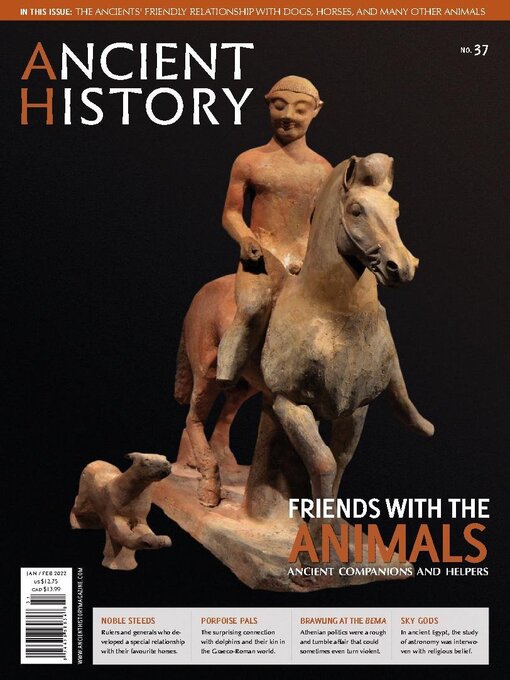
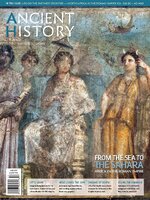 AH 52
AH 52
 AH 51
AH 51
 AH 50
AH 50
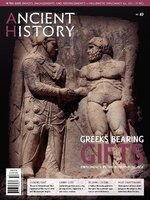 AH 49
AH 49
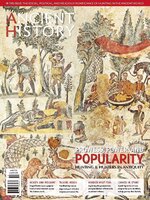 AH 48
AH 48
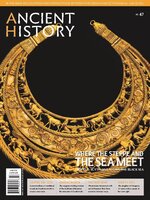 AH 47
AH 47
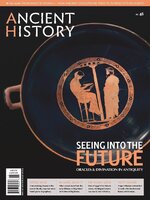 AH 46
AH 46
 AH 45
AH 45
 AH 44
AH 44
 AH 43
AH 43
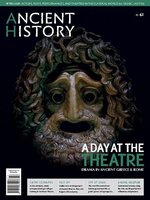 AH 42
AH 42
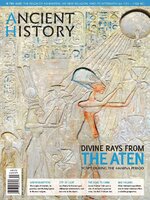 AH 41
AH 41
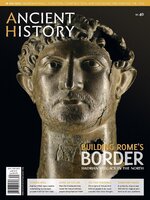 AH 40
AH 40
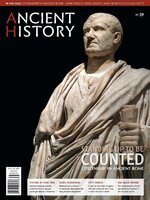 AH 39
AH 39
 AH 38
AH 38
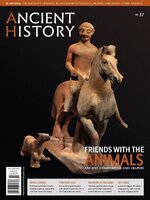 AH 37
AH 37
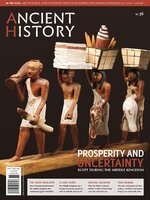 AH 36
AH 36
 AH 35
AH 35
